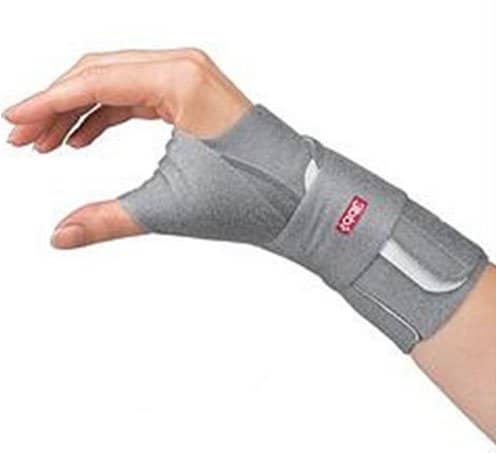De Quervain's Tenosynovitis
A common cause of wrist pain at the base of the thumb is known as De Quervain's Tenosynovitis. This injury mainly effects the thumb and the wrist and manifest itself as pain on gripping and pinching, and movements of the thumb particularly extending the thumb. Swelling and redness over the effected tendons may be visible.
Causes of De Quervain's Tenosynovitis
It is thought that the injury results from either repetitive movements or a direct impact to the outside of the wrist, but it may in some circumstances be idiopathic (no known cause).
Anatomy of De Quervain's Tenosynovitis
The tendons of Abductor Pollics Longus (APL) and Extensor Pollicis Brevis (EPB) are effected. These tendons run parallel to each other and pass under the Extensor Retinaculum ( which is designed to hold the tendons in place at the wrist joint and prevent bow-stringing.
As the tendons become inflammed and thickened through either repetitive movements or a direct blow they become impinged as they pass under the rigid retinaculum.
Symptoms of De Quervain's Tenosynovitis
Pain on movements of the thumb: pinching, wringing, making a fist, moving the thumb towards the base of the little finger, drawing the thumb away from the hand (stretching outwards) and during activities like opening a jar.
Diagnosis of De Quervain's Tenosynovitis
The main test used for diagnosis is Finkelstein's Test. The test in performed by holding arm out straight with thumb side up, tuck the thumb into the centre of the fingers and make a fist. Slowly bend wrist towards the floor (Ulnar deviation). A positive test is indicated when pain is felt over the tendons of the APL and EPB.
Treatment for Quervain's Tenosynovitis
RICE (An acronym for Rest, Ice, Compression and Elevation).
Therefore using ice packs up to 3 times per day for a period of 10 minutes.
Anti Inflammatory medication may be a usefull method of decreasing inflammation, check with your Doctor which one is most suitable.
Activity Modification involves reducing the amount of aggravating activity, performing the activity in a different way or taking frequent rest breaks.
The use of a Night Splint to the thumb and wrist to rest the tendons is essential.

Bracing for Wrist Paint
